How You Can Help Birds in Cold Winter Weather
Updated: Nov. 09, 2023
Don't worry about your backyard birds during frigid winter weather. Learn how to help them by providing food, water and shelter.
Our editors and experts handpick every product we feature. We may earn a commission from your purchases.
Whether it’s hot or cold, raining or snowing, birds have to adapt and survive the weather conditions. Here are a few things you can do on cold days to help birds in winter.
Where do birds go during a storm?
On This Page
Put Food Out Early to Help Winter Birds
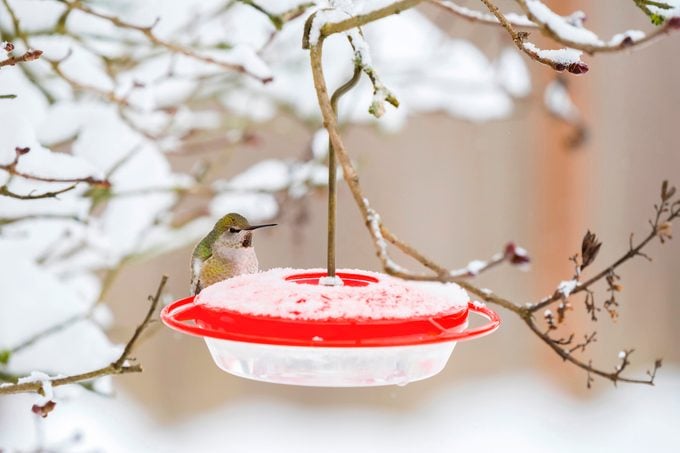
On cold winter days, birds need to eat immediately in the morning as they have used energy reserves to stay warm overnight. It’s helpful to provide easy access to food in the morning.
In addition, if you live in an area where hummingbirds and winter weather overlap, consider leaving your sugar water accessible to your flying jewels.
“When the weather gets below freezing, I use two feeders for the year-round Anna’s hummingbirds—I keep one inside and switch it out when the one outside gets slushy and starts to freeze,” says Birds & Blooms reader Lauren Colas of Camas, Washington.
Check out the top tips for feeding birds in winter.
Provide Fresh Water
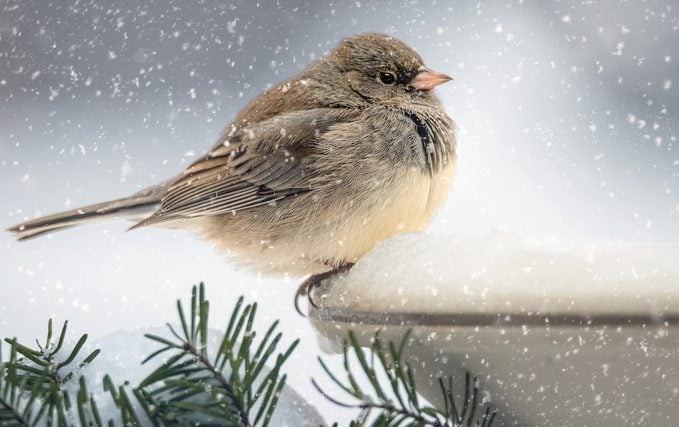
Once lakes and rivers freeze over, birds have a difficult time finding water. A heated bird bath just might be the most important item you can put out in extremely cold weather. By offering a heated bird bath for your birds to drink from, you will not only help them survive but will also attract many more birds than you would with feeders alone.
“A heated birdbath is essential in our cold winters,” says Birds & Blooms reader Stephen Johnson of Madison, Wisconsin.
Offer Birds Shelter from Wind
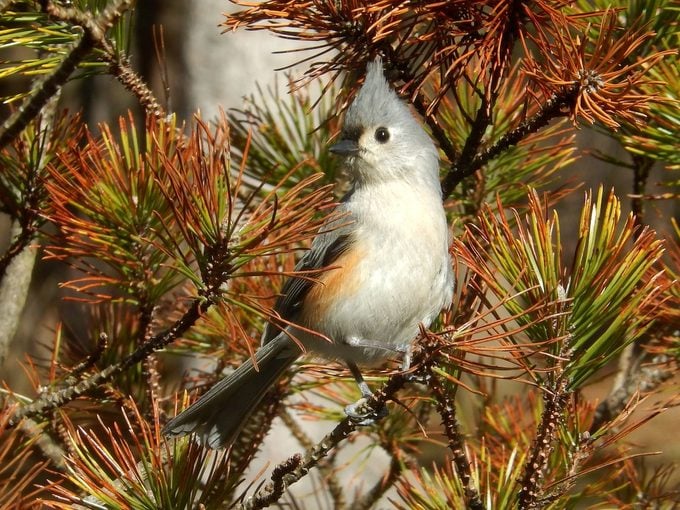
Give birds a way to escape the cold wind in winter. You can do anything from building a simple stick pile in the corner of your yard to putting up roosting boxes for birds to use. Leave your birdhouses up. There are several species that will use birdhouses as roosting sites during the winter. Bluebirds do this most commonly.
Be sure to clean out the old nesting material. If you can, flip the orientation of the front of the house so that the hole is on the bottom.
“A gourd I had hung out and forgotten about became shelter for a chickadee this past winter,” says Birds & Blooms reader Lorrie Topolin of New Hope, Pennsylvania.
Long term, you should plant native trees and evergreen trees for cover and shrubs with berries for a food source. Consider, too, taking action to protect your birds from the frigid breeze. “Our bird-feeding area is open to blustery north winds, so I make a semicircle shelter of vertically placed tree logs around the back side of it to block the wind,” says Birds & Blooms field editor Sue Gronholz of Beaver Dam, Wisconsin.
Here’s more ways to create winter shelter for birds.
Serve High Energy Foods
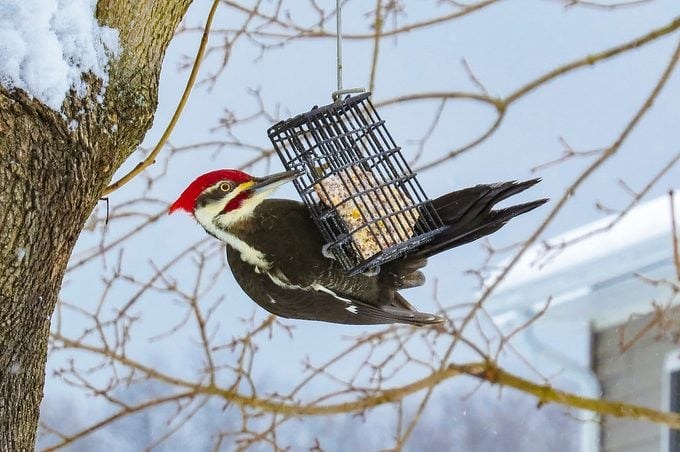
The more energy birds can gather quickly, the more likely they are to thrive in winter. Peanuts, sunflower chips, and suet are all great options. Not only are they high energy foods, they are also quick and easy for the birds to eat allowing them to feed more efficiently on cold days.
Suet is a great source of protein for the birds. This will help them stay warm and survive those extremely cold nights. Remember that the larger woodpeckers much prefer a suet feeder with a tail prop!
Peanuts, both in and out of the shell, are another good source of protein for your birds. Jays, woodpeckers, nuthatches, and chickadees are just a few of the many species that will frequent a peanut feeder.
Enjoy these wonderful wintry photos of birds in snow.
Refill Feeders Late in the Day
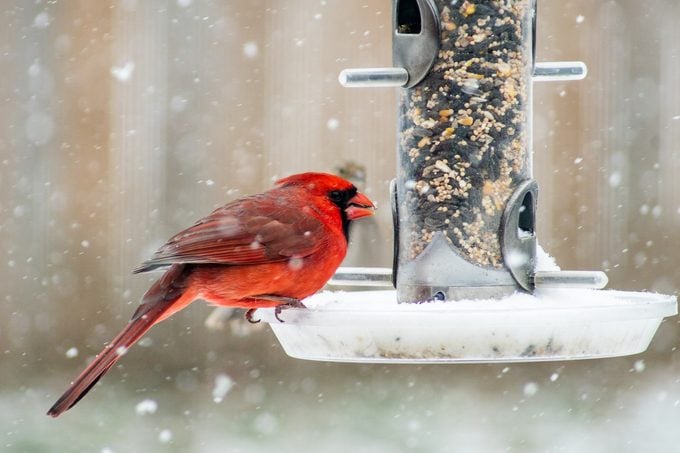
Keep feeders filled with birdseed to help birds in winter. Giving your birds access to full feeders just before sunset will provide them with an extra energy boost.
Psst—these are the foods you should feed birds in winter.
Use a Ground or Platform Feeder
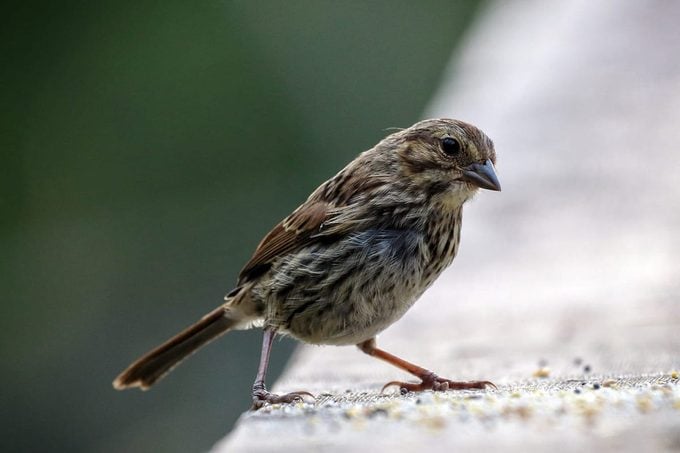
There are quite a few species that are not comfortable coming to traditional bird feeders. Most of our native sparrows such as song, , fox, white-throated, and white-crowned, prefer to feed on the ground. By offering seed using a ground or open platform feeder, you will ensure that these species have easy access to food even when the ground is covered with snow.
Cold weather warriors: How do birds stay warm in winter?
Leave Seed-Bearing Plants Standing
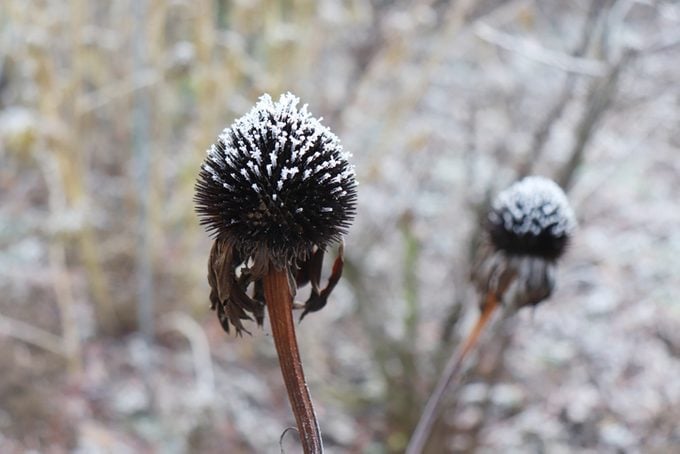
Not cutting back certain plants after the growing season ends can provide much-needed fuel and shelter for seed eating winter birds such as goldfinches. “By not clearing out my garden in the fall, I leave plenty of seed heads and leafy cover for the birds,” says Birds & Blooms field editor Judy Roberts of Graytown, Ohio.
Psst—learn about winter bird myths and facts.
Join a Citizen Science Project
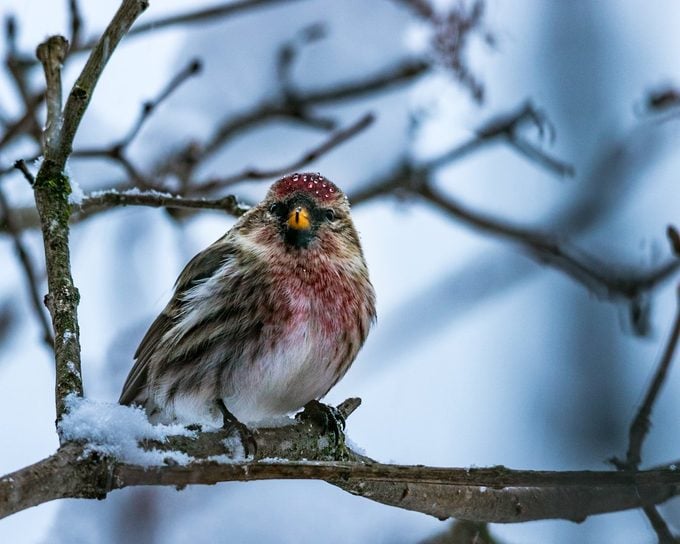
While you’re watching your feeders, consider recording your observations to help scientists. “[In the winter] I participate in Project FeederWatch, Cornell Lab of Ornithology’s citizen science project that helps scientists understand the status of bird populations,” says Birds & Blooms reader Wallace Elton of Middlebury, Vermont.
Learn how to participate in the annual Christmas Bird Count.
